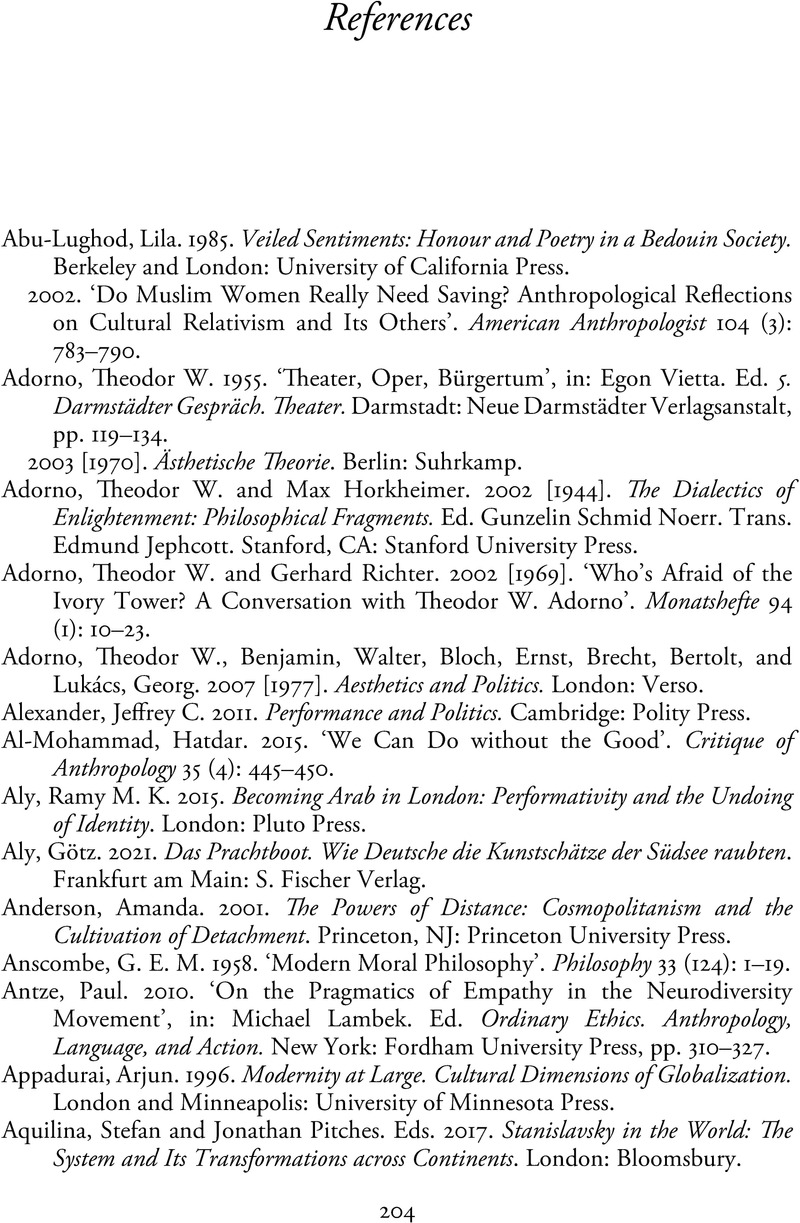Book contents
- State of the Arts
- Theatre and Performance Theory
- State of the Arts
- Copyright page
- Dedication
- Contents
- Figures
- Acknowledgements
- Note on the Text
- Introduction
- Chapter 1 Activism, Aesthetic Education, and the Making of Modern German Theatre
- Chapter 2 A Public Migrant Theatre
- Chapter 3 Rehearsal as Method
- Chapter 4 Repertoire Politics
- Chapter 5 Places along the Ruhr
- Conclusion
- References
- Index
- References
References
Published online by Cambridge University Press: 03 August 2023
- State of the Arts
- Theatre and Performance Theory
- State of the Arts
- Copyright page
- Dedication
- Contents
- Figures
- Acknowledgements
- Note on the Text
- Introduction
- Chapter 1 Activism, Aesthetic Education, and the Making of Modern German Theatre
- Chapter 2 A Public Migrant Theatre
- Chapter 3 Rehearsal as Method
- Chapter 4 Repertoire Politics
- Chapter 5 Places along the Ruhr
- Conclusion
- References
- Index
- References
Summary

- Type
- Chapter
- Information
- State of the ArtsAn Ethnography of German Theatre and Migration, pp. 204 - 241Publisher: Cambridge University PressPrint publication year: 2023



